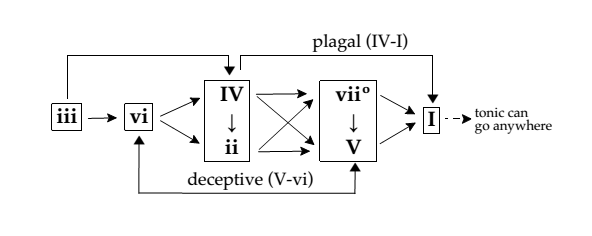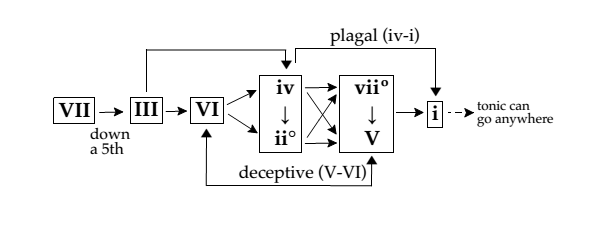Back • Return Home
Generating Chord Progressions
An easy way to generate simple Chord Progressions (for Practicing, Composing, etc.) is to use dice. First, pick a Scale. If we roll a 1, then we use the I Chord of our chosen Key. If we roll a 2, then we use the ii Chord. If we roll a 3, then we use the iii Chord...and so on. If we picked a Major Scale, then we only get the Primary and Secondary Chords because there are only six faces on a die (i.e.: there is no way to roll a 7 for a diminished Chord).
There are also charts for coming up with basic Chord Progressions, such as these two from Mark Feezell:
Chord Progressions In Major Keys

• The I can go to any other Chord.
• The ii can go to V or vii°.
• The iii can go to IV .
• The IV can go to I, ii, V, or vii°.
• The V can go to I or vi.
• The vi can go to ii, IV, or V.
• The vii° can go to I.
Chord Progressions In Minor Keys

• The i can go to any other Chord.
• The ii° can go to V or vii°.
• The ♭III can go to iv or ♭VI.
• The iv can go to i, ii°, V, or vii°.
• The V can go to i or ♭VI.
• The ♭VI can go to ii°, iv, or V.
• The ♭VII can go to ♭III.
For more sophisticated Chord Progressions, we can use Stephen Mugglin's "Chordmaps". There are some for both Major Keys and minor Keys as well. [If you want to test out your Chord Progressions, but are away from your instrument or simply want something to play with, there are online tools that can help. For example, this one has a lot of nice features.]

